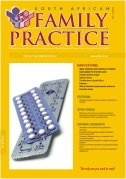Immunisation-Related Knowledge, Attitudes and Practices of Mothers in Kinshasa, Democratic Republic of the Congo
Keywords:
immunisation, EPI coverage, correlates, Kinshasa
Abstract
Background: In the Democratic Republic of Congo, it was reported in 1995 that the routine coverage for BCG was as low as 47%, and that it was 27% for DPT3, 28% for OPV3 and 39% for measles vaccine. The trend also was declining unevenly. This study aimed to determine the reasons for such low coverage, examining the socio-demographic characteristics of mothers and health system factors such as health services barriers. It further sought to assess the knowledge, attitudes and practices of mothers associated with routine immunisation. Methods: In 1999, a cross-sectional household survey applied a systematic sampling technique in a sample of eight out of the 22 health zones that then served the population of Kinshasa. These were dichotomised into low- and high-coverage health zones, based on BCG immunisation coverage. Mothers of children aged from zero to four years were the respondents to a standardised questionnaire. Results: A total of 1 613 children aged zero to four years participated in the study. Awareness of immunisation and its importance in protecting a child against diseases was universal, although most mothers could not tell exactly against which diseases. Mothers had positive attitudes towards immunisation (98%). Coverage based on the immunisation card, however, was as low as 37%, indicating a discrepancy between the high level of knowledge and positive attitudes, with the observed low immunisation coverage. The father’s education and the mother’s experience of an EPI-targeted disease in the family emerged as significant predictors of complete immunisation of the child. The father’s involvement and the mother’s ability to cite signs of severity of EPI diseases were associated with the child’s vaccination status in the high-coverage health zone. The mother’s vaccine-related knowledge was a predictor of immunisation status only in the low-coverage zone. Conclusions: Different factors determine the complete vaccination status, depending on whether the child lives in a zone with low or high routine EPI coverage. For example, the father’s involvement is associated with the child’s vaccination status in the high-coverage zone, but not in the low-coverage zone. Programmes and policy makers should take these factors into account when designing strategies to increase immunisation coverage.
Published
2008-02-28
Section
Original Research
By submitting manuscripts to SAFP, authors of original articles are assigning copyright to the South African Academy of Family Physicians. Copyright of review articles are assigned to the Publisher, Medpharm Publications (Pty) Ltd, unless otherwise specified. Authors may use their own work after publication without written permission, provided they acknowledge the original source. Individuals and academic institutions may freely copy and distribute articles published in SAFP for educational and research purposes without obtaining permission.

